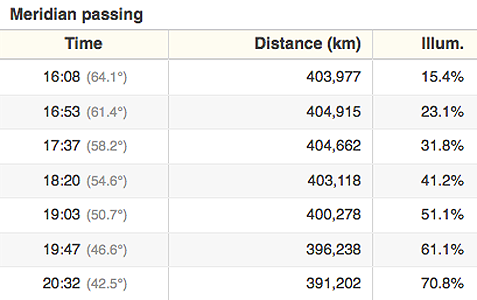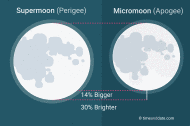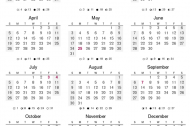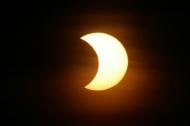Using the Moon Pages
Each location in our database has a Moon section offering information about moonrise, moonset times and headings, Moon phases, illumination percentages, and more.

How to use timeanddate.com's Moon data.
©bigstockphoto.com/doraclub
To access it, click on the blue “Sun & Moon” tab underneath the map on any City Information Page, then click on the link “Moonrise & Moonset” in the line below. It is also possible to access the pages via the Moon Calculator.
Note: This page offers extensive information in text form. For a more graphic representation of the Moon's movements and phases on the current date, see the Sun & Moon Today page or the Moon Light World Map.
Selecting location and date
To obtain Moon information for a different location, type a city name into the search field below the yellow band near the top of the page. To see the table for a different month, use the drop-down menus just above the table and click the green “Go” button.
Core data at a glance
The yellow band near the top of the page contains the most important Moon information for the current date:
- The current Moon phase and illumination percentage – the icon shows the current phase as seen from the selected location.
- The current time and date
- The Moon's current direction, altitude, and distance from Earth (updated in real-time)
- Precise times of upcoming Moon phases
- A map showing the selected location
Moon phases
Each row in the table shows data for the date specified in the first column on the left. The phases of the Moon are also displayed the date column.
Note: The icons are static and reflect the Moon phases as seen from the northern hemisphere. Observers in the southern hemisphere see the Moon the other way round. For a dynamic, more realistic illustration of the Moon's current phase, please see the animation on the left end of the yellow band near the top of the page.
Hover over the Moon phase symbols for more information. The following Moon phases are marked in the table:
New Moon (dark moon)
First quarter
Full Moon
Third quarter
Note: This tool provides the exact times and dates of the Moon phases irrespective of the Moon's actual visibility. For example, a full Moon may occur before moonrise or after moonset.
Read more information about Moon phases or use the Moon Phase Calculator to see Moon phases for an entire year.
The “Moonrise/set” column

The “Moonrise/set” column with azimuths
This column shows when the Moon rises and sets. A minus sign (-) is displayed if the Moon does not rise or set on a particular day. On a day when the moonset occurs before the moonrise, an additional column is added to avoid confusion.
The arrows and angles show the azimuths (horizontal headings) of moonrise and moonset. Hover over an entry for more information. Moonrise is the time when the upper part of the Moon is visible, and moonset is when the last part of the Moon is about to disappear below the horizon (in clear weather conditions).
The times for moonrise and moonset are based on the ideal situation, where no hills or mountains obscure the view and the flat horizon is at the same altitude as the observer. Note that the Moon might not be visible ― even if it is above the horizon ― if it is in a phase near the new moon or if the weather is not clear.
If the horizon in the moonrise/moonset direction is at a higher altitude than that of the observer, moonrise will be later and moonset earlier than listed (and the reverse: on a high mountain where the horizon is below the observer, the moonrise will be earlier and moonset later than listed).
The Earth's atmosphere refracts the incoming light from the Moon in such a way that the Moon is visible longer than it would be without an atmosphere. The refraction depends on atmospheric pressure and temperature. Our calculations use the atmospheric pressure of 101.325 kPa (kilopascals) and temperature of 15 °C or 59 °F defined by the International Standard Atmosphere (ISA) model. A higher atmospheric pressure, or lower temperature than the standard, means more refraction and the moonrise will be earlier and moonset later. In most cases, however, this would affect the rising and setting times by less than a minute. Near the North and South Poles this could have greater impact because of low temperatures and the slow rate of the Moon's rising and setting.
Because the Moon revolves around the Earth, its position in the sky relative to the Sun changes rapidly. Within a 24-hour period, its horizontal position, relative to the Sun, changes by about 12 degrees in a counterclockwise direction. In most cases, this causes the moonrise and moonset to occur later than the day before. As the time between moonrise occurrences is more than 24 hours, there are days when the Moon does not rise so the event does not occur until the day after.
For regions near the North or South Pole, the Moon might be up all day or down all day. If this is the case, the Moon Calculator will show “Up all day” or “Down all day”.
Moonrise and Moonset Azimuth
The azimuth displayed is the horizontal direction of the Moon at moonrise or moonset, at the times displayed in the Moonrise and Moonset columns. As on a compass, the azimuth is measured in degrees, with 360 in a full circle, counting in a clockwise direction starting from north. North has an azimuth value of 0 degrees, east is 90 degrees, south is 180 degrees, and west is 270 degrees. A small arrow is displayed to indicate the map direction where the Moon will rise or set (for a map where north is upward).
The azimuth values are based on the times displayed for moonrise and moonset. The height of the horizon and refraction, as described for the “Moonrise/set” column, can influence the direction where the Moon rises or sets.
The directions refer to true north and not to magnetic north. True north refers to north according to the Earth’s axis, magnetic north refers to the direction in which the north end of a compass needle will point in response to the Earth’s magnetic field.
The “Meridian Passing” column

The “Meridian Passing” column with altitudes
All values displayed in the “Meridian Passing” columns refer to the moment when the Moon passes through the meridian (longitude) at the selected location. At this point in time, the Moon stands directly north, overhead or south as seen from the selected location (except for Polar Regions, where the Moon might be down all day during the winter).
The “Time” column shows when the Moon passes the meridian on that day (local time). It also shows the altitude of the Moon's center above the ideal horizon at the passing time. Typically this is the highest position it reaches in the sky that day (except near the South and North Poles, where the altitude often increases or decreases all day and night). The altitude takes into account typical refraction in the Earth's atmosphere. If the Moon is below the horizon all day, the altitude is labeled “below”.
“Distance” is the distance from the Earth's center to the Moon's center in kilometers or miles, depending on the user's settings. To compare, the Earth has an equatorial diameter of 12,756 km and the Moon an equatorial diameter of 3,476 km.
The fraction of the Moon's surface illuminated by the Sun's rays as seen from the selected location is displayed under “Illum.”. This percentage also refers to the moment the Moon passes the meridian.
“Moon does not pass the Meridian this day” is displayed if the Moon does not pass through the meridian on a given date. This occurs once every Moon cycle (lunation).
Accuracy
Times are rounded to the nearest minute and should generally match closely with those listed in the annual Astronomical Almanac by H.M. Nautical Almanac Office in the U.K. and the United States Naval Observatory.
A representative sample set of 100 records consisting of times for moonrise and moonset was compared with times listed in The Astronomical Almanac for 2007. Most of the records were the same, but five differed by one minute each.
Governments introduce changes to Daylight Saving Time and can change a location's time zone, sometimes on short notice. Therefore, there is a significant chance of errors for future dates due to unforeseen time changes. Known future changes in Daylight Saving Time are adjusted for.
Upcoming Supermoons
| Year | Date |
|---|---|
| 2016 | Monday, November 14 |
| 2017 | Sunday, December 3 |
| 2018 | Monday, January 1 |
Moon Phases In Your City
Moonrise & Moonset Times
Eclipse Lookup
Weather Look-Up
Day & Night World Map App

Watch daylight move across the planet... More






Share this page / Follow us on:
Visit us on: